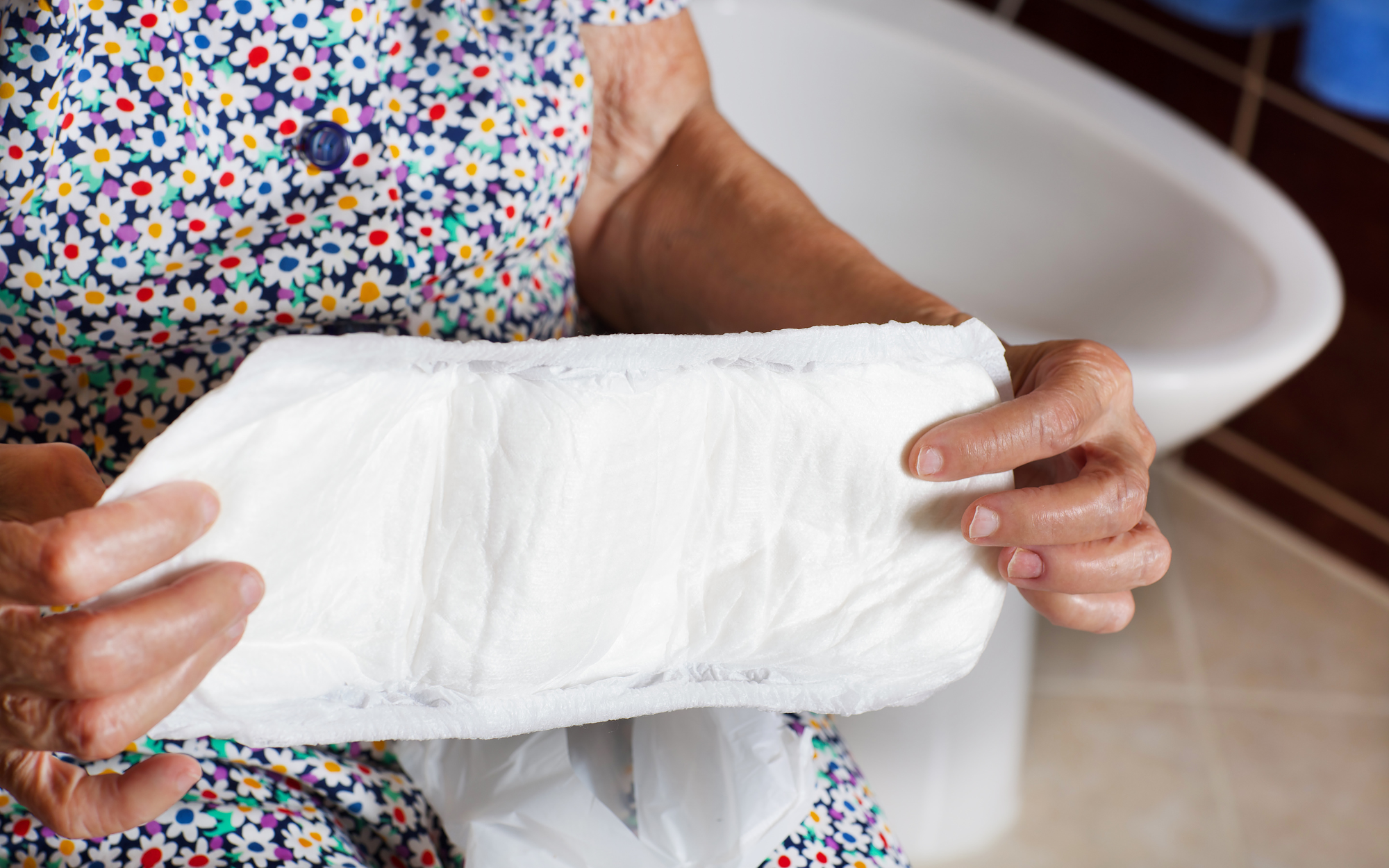Most asked questions people have about overactive bladder

Are you always running to the bathroom? Feeling like you constantly need to pee? Fighting the urge to go again, because you just went 10 minutes ago? Chances are, you’re struggling with overactive bladder. OAB for short.
OAB symptoms are extremely common. They affect as many as 30% of men and 40% of women in the US alone. Still, OAB can feel like a bit of a mystery. That’s why we’re answering all of the most frequently asked questions about OAB right here.
What is overactive bladder?
In a lot of ways, OAB is exactly how it sounds: a group of urinary symptoms that happen when your bladder is more active than it should be.
OAB is not a disease. It’s a series of brain signal issues that give your bladder that “gotta go” sensation. OAB is a common and treatable condition, but it can also feel embarrassing and confusing. That’s why so many people choose to suffer in silence instead of seeking help from their doctor. If you think you have OAB symptoms, you’re not alone — and there are so many ways to improve your urinary function.
What are the symptoms of OAB?
The most common symptom of OAB is called urgency. It’s the sudden, uncontrolled urge to pee, which often causes urine to leak out without your permission (also known as urge incontinence).
Another symptom of OAB is frequent urination — the constant need to pee throughout the day and night. You might find yourself waking up several times to relieve your bladder.
These symptoms can have a major impact on your physical, mental, and emotional well-being. Just getting through the day can feel cumbersome, as you’re constantly running to the bathroom and feeling nervous if you’re not close to a toilet. OAB can disrupt your sleep and sex life, leading to depression, anxiety, and fatigue. Some symptoms, like incontinence, can even cause infection and skin irritation down there.
What causes OAB?
There are many myths about the cause of OAB. You might have heard that it’s a normal part of getting older, being a woman, or having a prostate. The worst myth of all is that OAB is caused by something you did.
The truth is, nobody fully understands the exact cause of OAB. What we do know is that OAB happens when the nerve signals between your brain and your bladder stop working properly.
Here’s how your bladder and brain work together normally:
- When your bladder is full, your brain sends a signal for your bladder muscles to contract.
- This forces urine out of the bladder through the urethra.
- For the most part, you get to control when this happens. For example, if you need to wait until you can get to a toilet.
- Once your bladder is empty, your bladder muscles relax.
The problem starts when this process breaks down. Your brain might tell your bladder it’s time to empty, even if it’s not full yet. On top of that, you might lose the ability to control when your bladder muscles squeeze. This creates a perfect storm for OAB symptoms, like urgency, frequency, and incontinence.
Who is usually affected by OAB?
Although there’s no concrete cause of OAB, there are some risk factors that could make you more susceptible to the symptoms.
- Neurological disorders that impact brain signals to your bladder
- Hormonal changes (particularly during menopause)
- Weak pelvic muscles
- Certain prescription medications
- Urinary tract infections (UTIs)
- Bladder stones
- Poor diet or exercise
- Conditions that affect the brain or spinal cord, like Parkinson’s, MS, or stroke
If any of the above apply to you and you think you might be experiencing OAB symptoms, talk to your doctor about diagnosis and treatment.
What are some therapies or treatments for OAB?
The frustration of overactive bladder might make you feel hopeless. But there are so many ways to treat and manage OAB symptoms. It’s up to you and your doctor to decide which methods are best for you. Your treatment journey will likely require some trial and error. Remember to be kind to yourself along the way.
Lifestyle Changes.
The most common treatments for OAB are behavioural changes. These could include one or more of the following.
Dietary changes. Try to limit food and drinks that irritate the bladder, like coffee, tea, alcohol, soda, tomato, citrus fruits, chocolate, and some spicy foods.
Keep a bladder diary. Write down when and how often you’re peeing, plus any triggers that seem to be making your symptoms worse. This can help you decipher what changes could help your symptoms.
Weight loss. Studies have shown that even 5 to 10% weight loss in overweight patients can help relieve symptoms of OAB.
Double voiding. After you pee, wait a few moments and then try peeing again. If you struggle to fully empty your bladder, this could help.
Delayed voiding. When you get the urge to pee, try waiting before you go. You might wait a few minutes or a few hours, but the practice can potentially help you resist the urgency long-term.
Make a pee schedule. Set times during the day to urinate, whether you have the urge to or not. This can help you regain control of your bladder.
Bladder muscle exercises. These could include kegals, where you strengthen your pelvic floor by tightening your pelvic muscles over and over. You can also do quick flicks — an exercise where you squeeze and release your pelvic muscles repeatedly when you feel the urge to pee. This can calm the urge and help you focus on staying in control of your bladder.
Medical Treatments
If lifestyle changes aren’t doing the trick, your doctor might prescribe medical OAB treatments. These could include:
Prescription drugs to relax the bladder muscles, like anti-muscarinics or beta-3 agonists. These medications often come with frustrating side effects, like dry mouth, constipation, and blurred vision.
Bladder Botox injections to stop the bladder muscles from contracting so much.
Nerve stimulation to wake up the signals between the brain and the bladder and help them work properly. The two main types of nerve stimulation are PTNS and SNS.
Bladder reconstruction surgery (among other medical procedures), only for rare and severe cases.
Can I do anything to prevent OAB symptoms?
Good news: many of the lifestyle changes that treat OAB can also be used to prevent symptoms before they start. By maintaining a healthy diet and weight, getting regular exercise, limiting caffeine and alcohol intake, exercising the pelvic floor muscles, and taking effective natural OAB supplements, you can improve your bladder strength and brain health proactively.
Are there any supplements I can take to treat OAB naturally and help maintain a healthy bladder?
Yes! Meet Utiva Bladder Health. This all-natural supplement contains a unique formula that has been approved by Health Canada for 13 separate improvement claims, including OAB symptoms.
What makes Utiva Bladder Health so effective? 500 mg of proprietary full-spectrum dried cranberry fruit (also known as Flowens®). This unique extract has a proven superpower: strengthening your urinary function. It is believed that through an indirect immune and anti-inflammatory response, Flowens® has the ability to improve the bladder microbiome and relieve your OAB symptoms.
The Utiva Bladder Health formulation has a unique blend of whole cranberry, including seeds, skin, flesh, and juice. This creates a specific profile optimized for urinary health. Its benefits are supported by gold standard clinical evidence and it presents little to no side effects.
Though Bladder Health is not yet available in Canada, it will become available shortly so be sure you're signed up to our newsletter to be the first to know once it launches. Talk to your doctor about trying Utiva Bladder Health with a 100% money-back guarantee.
Knowledge is power
Sign up to our newsletter to keep learning!

- Choosing a selection results in a full page refresh.
- Opens in a new window.





